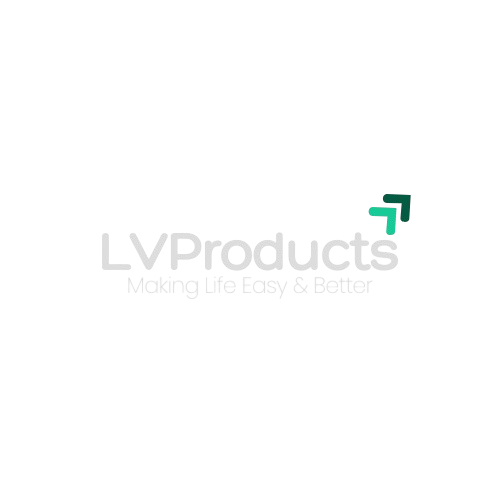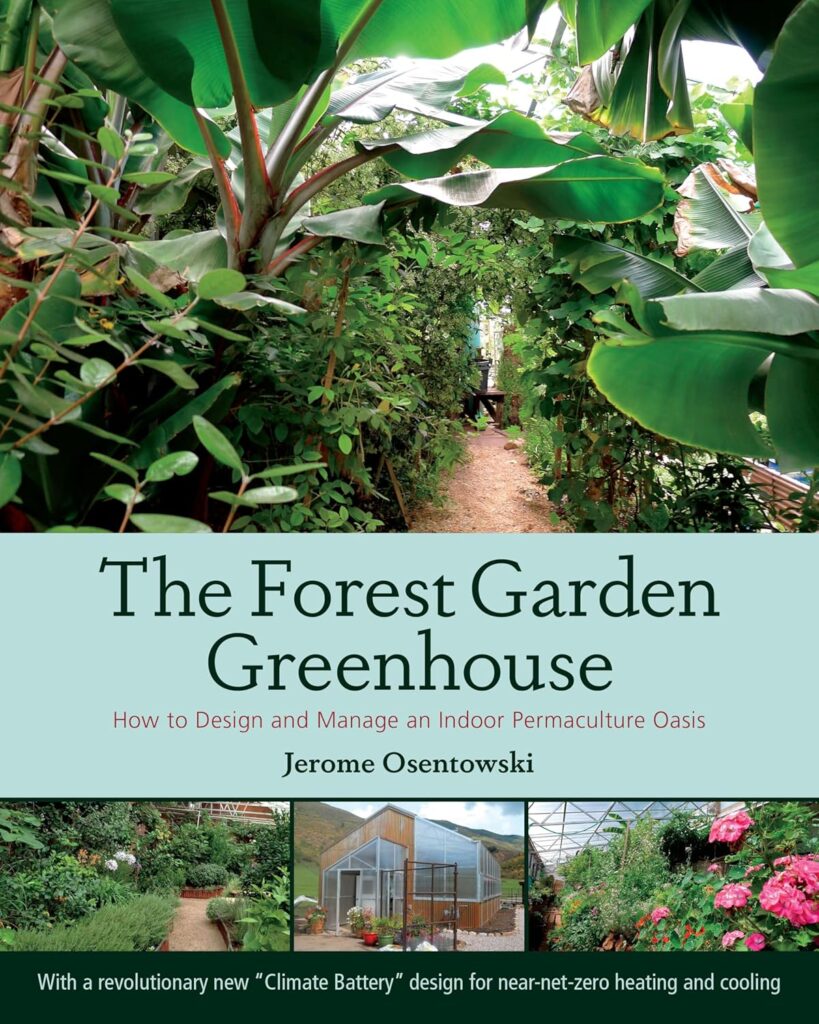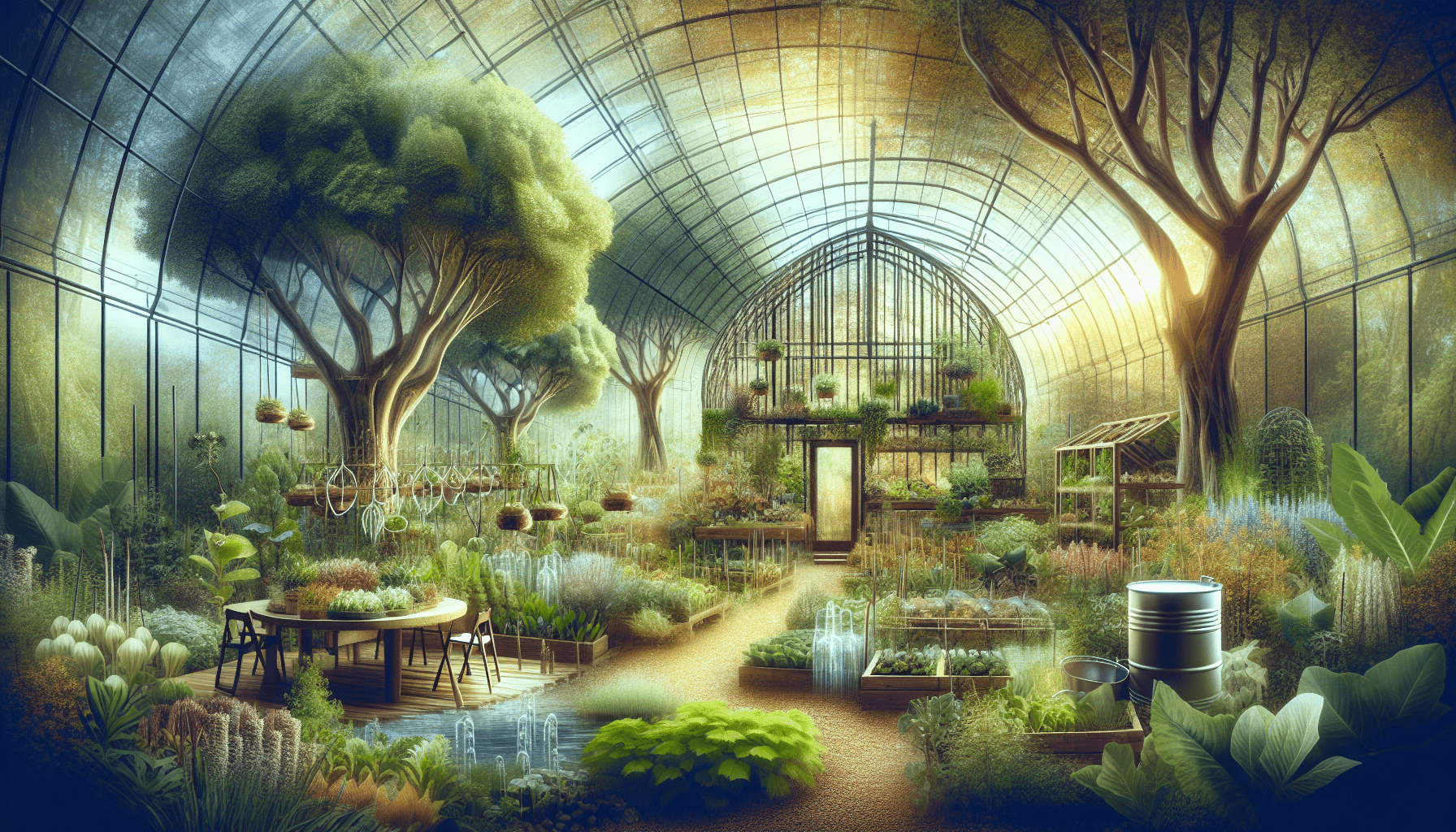Have you ever dreamed of creating your very own indoor oasis, filled with lush greenery and sustainably grown produce? Look no further than “The Forest Garden Greenhouse: How to Design and Manage an Indoor Permaculture Oasis.” This comprehensive guide will walk you through every step of designing and maintaining your own indoor permaculture paradise.
A Detailed Overview
If you’re new to the world of permaculture and sustainable gardening, this book is the perfect starting point for you. The author provides a detailed overview of the principles of permaculture and how they can be applied to indoor gardening. You’ll learn about the importance of biodiversity, soil health, and water conservation in creating a thriving indoor ecosystem.
Easy to Understand
One of the things that sets “The Forest Garden Greenhouse” apart is its accessibility. The author breaks down complex permaculture concepts into easy-to-understand language, making it a great read for beginners and seasoned gardeners alike. You won’t be overwhelmed by technical jargon or dense theory – this book is all about practical, hands-on advice.
Practical Tips and Techniques
Once you have a solid understanding of the principles of permaculture, it’s time to put that knowledge into practice. This book is packed with practical tips and techniques for designing and managing your indoor garden. From choosing the right plants for your space to creating a thriving soil ecosystem, you’ll find everything you need to get started on your indoor permaculture journey.
Designing Your Space
The first step in creating your indoor oasis is designing your space. “The Forest Garden Greenhouse” provides in-depth guidance on choosing the right location for your greenhouse, maximizing natural light, and creating a layout that promotes biodiversity and healthy plant growth. You’ll learn how to design your space in a way that mimics natural ecosystems, making it easier for your plants to thrive.
Managing Your Garden
Once your indoor garden is up and running, it’s time to focus on maintenance. This book covers everything from watering and feeding your plants to managing pests and diseases without harmful chemicals. You’ll learn how to create a self-sustaining ecosystem that requires minimal intervention, allowing you to sit back and enjoy the fruits of your labor.
Real-Life Examples
To help bring the concepts in “The Forest Garden Greenhouse” to life, the author includes real-life examples of successful indoor permaculture projects. You’ll read about gardeners who have transformed their living spaces into thriving ecosystems, growing everything from fresh herbs to tropical fruits. These stories serve as inspiration and practical advice for anyone looking to create their own indoor paradise.
Case Studies
Throughout the book, you’ll find detailed case studies of indoor permaculture projects of all sizes. Whether you’re working with a small apartment balcony or a dedicated greenhouse space, you’ll find examples that resonate with your own situation. These case studies highlight the diversity and creativity of indoor permaculture, showing you that there’s no one-size-fits-all approach to sustainable gardening.
Pros and Cons
To give you a well-rounded view of “The Forest Garden Greenhouse,” let’s break down some of the pros and cons of this book.
| Pros | Cons |
|---|---|
| Comprehensive guide to indoor permaculture | Some readers may find the information overwhelming |
| Accessible language for beginners | Limited focus on specific plant species |
| Practical tips and techniques for designing and managing your indoor garden | Lack of visual aids for design concepts |
| Real-life examples and case studies | Limited discussion of climate control in indoor gardens |
Pros:
“The Forest Garden Greenhouse” is a comprehensive guide that covers all aspects of indoor permaculture, making it a valuable resource for anyone interested in sustainable gardening. The author’s accessible language and practical tips make it easy for beginners to get started on their own projects. The real-life examples and case studies provide inspiration and guidance for readers of all experience levels.
Cons:
While this book is packed with valuable information, some readers may find the sheer volume of content overwhelming. Additionally, if you’re looking for in-depth information on specific plant species, you may need to supplement your reading with additional resources. The lack of visual aids for design concepts could also be a drawback for visual learners. Lastly, the book could benefit from a more in-depth discussion of climate control in indoor gardens, as this is a crucial aspect of successful indoor gardening.
Final Thoughts
In conclusion, “The Forest Garden Greenhouse: How to Design and Manage an Indoor Permaculture Oasis” is a must-have resource for anyone interested in creating their own indoor garden. Whether you’re a seasoned gardener looking to expand your knowledge or a beginner looking to get started on your first project, this book has something to offer. With its practical tips, real-life examples, and accessible language, it’s a comprehensive guide to indoor permaculture that will inspire and educate you on your sustainable gardening journey.
Disclosure: As an Amazon Associate, I earn from qualifying purchases.





0 responses to “The Forest Garden Greenhouse Review”